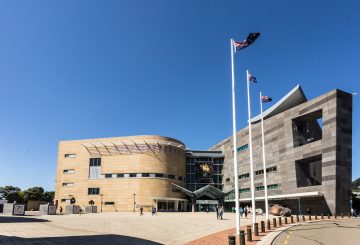Khi cuộc khủng hoảng chi phí sinh hoạt trở nên tồi tệ hơn, một số chủ vật nuôi đang phải vật lộn để mua cả bữa ăn và thức ăn cho thú cưng của họ. Điều này đã dẫn đến sự gia tăng số lượng chó được giao cho các tổ chức cứu hộ, vốn đã ở mức công suất tối đa.
Tyra Basilicata, người thành lập Ngân hàng thức ăn cho chó Wellington ngay trước Giáng sinh, đã cung cấp hơn 700kg thức ăn cho hơn 200 chú chó kể từ đầu năm. Do nhu cầu cao, cô phải chuyển từ giao thức ăn đến nhà của mọi người sang dịch vụ di động nơi mọi người đến với cô.
Nhiều khách hàng của Basilicata làm việc toàn thời gian nhưng vẫn phải vật lộn để kiếm sống. Một số thậm chí không có thức ăn vào những ngày họ ăn thức ăn cho chó.
Nicole Doriguzzi và Vicky Hayward, những người sáng lập Ellie’s Canine Rescue và Rehome, cũng đã chứng kiến sự gia tăng số người yêu cầu giúp đỡ kể từ khi họ bắt đầu tổ chức của mình vào năm 2019. Họ đã giải cứu và hồi hương 302 chú chó vào năm 2022, 518 vào năm 2023 và hy vọng sẽ cứu được nhiều hơn nữa trong năm nay.
Helena Clark và Johanna Rush, người bắt đầu Chance 4 Change vào tháng 11, đã nhận được 54 chú chó ở khu vực Wellington. Họ đã thấy chó được cho ăn thức ăn của con người như Weetbix và sữa vì chủ của chúng không đủ khả năng mua thức ăn cho chó.
Để đối phó với cuộc khủng hoảng, chính phủ đã công bố những thay đổi đối với luật thuê nhà, bao gồm trái phiếu thú cưng kéo dài hai tuần và nghĩa vụ cho người thuê nhà phải trả cho thiệt hại do vật nuôi của họ gây ra. Tuy nhiên, những thay đổi này sẽ không được thực hiện cho đến cuối năm tới.
Clark và Rush có kế hoạch bắt đầu một chương trình giáo dục trong những tháng tới để giảm số lượng chó không mong muốn, bị bỏ rơi và bị lạm dụng. Chương trình sẽ dạy trẻ em về sự an toàn của chó và chăm sóc động vật, nhấn mạnh tầm quan trọng của việc tiêm phòng và tiêm phòng.




























































